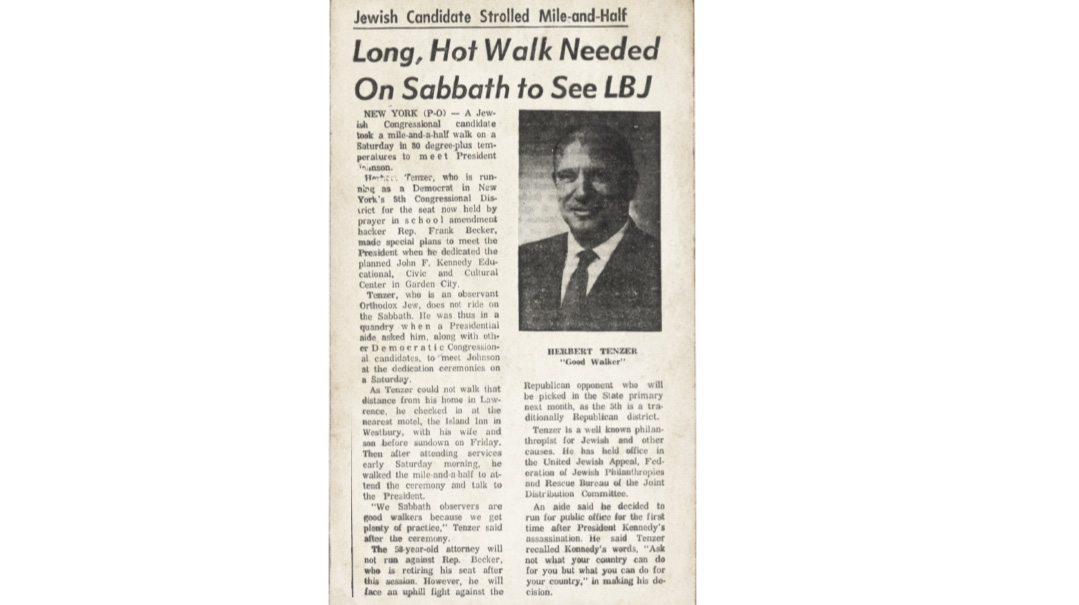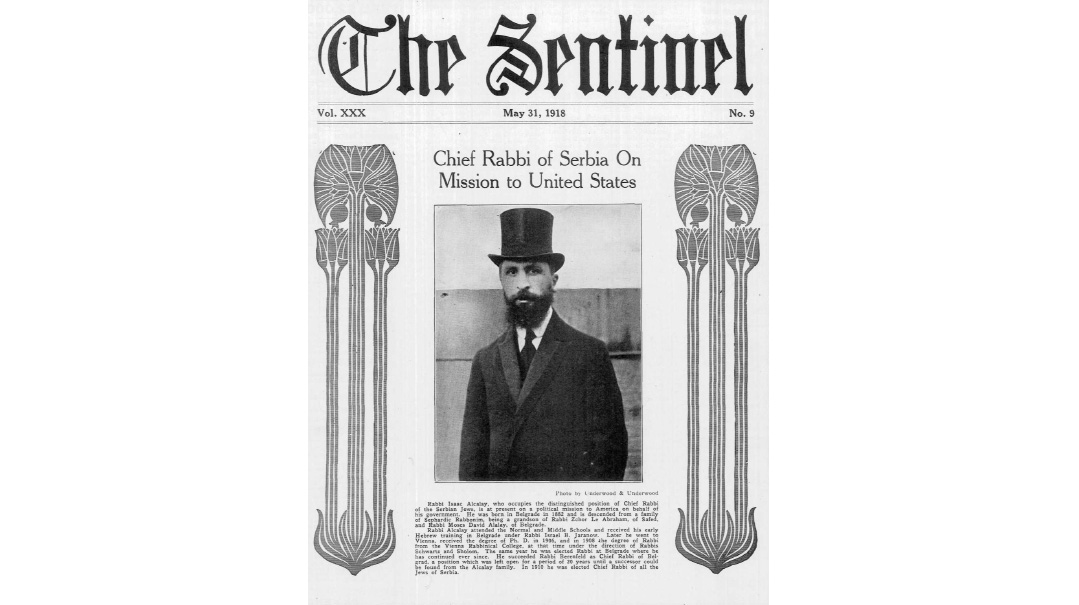A Walking Kiddush Hashem
| January 3, 2023In addition to serving two terms in Congress before retiring, Tenzer was a renowned champion for the Orthodox community

Title: A Walking Kiddush Hashem
Location: Washington, D.C.
Document: The Jewish Post
Time: May 1964
“There is no limit to what a man can do or where he can go if he doesn’t mind who gets the credit.”
—Plaque on the desk of Congressman Herbert Tenzer
One of 20th-century American Orthodoxy’s finest representatives was Herbert Tenzer (1905–1993). Born into a family of Polish immigrants on the Lower East Side, he graduated NYU Law School in 1927 and rose through the ranks of corporate law. As a senior partner in the firm of Tenzer, Greenblatt, Fallon, and Kaplan, he was known for his legal prowess, ethics, and his willingness to assist the less fortunate.
Tenzer founded and ran countless Jewish institutions and organizations, but none more important than Rescue Children Inc., which he founded in the immediate aftermath of World War II in partnership with the Vaad Hatzalah. Rescue Children Inc. set up orphanages to house, rehabilitate, and educate child survivors of the Holocaust under Orthodox auspices. Tenzer utilized government connections to obtain buildings free of charge in France and Belgium.
Before being placed in Rescue Children Inc. homes, children were interviewed by executive members of the organization, who paid their own expenses to Europe. The children would be asked for biographical information and for recollections of people in their hometowns. Rescue Children Inc. would then attempt to locate relatives of the children and ultimately succeeded in identifying families of over 400 children.
The agency developed an “adoption” program to encourage organizations and individuals to sponsor children, with a goal of raising $365 annually for each child, a dollar a day. Mayor William O’Dwyer of New York was the first to “adopt” an orphan this way — an eight-year-old Jewish boy from Belgium. In July 1947, O’Dwyer sent a bicycle to the boy at a dinner in honor of Herbert Tenzer at the Hotel Astor in New York.
Ultimately the organization succeeded in placing 1,450 children. A third found their parents, another third were placed with relatives, and the remainder immigrated to Israel under the auspices of Poalei Agudath Israel.
In 1964, local Democratic Party activists in Tenzer’s hometown of Lawrence, New York, encouraged him to run for Congress. An underdog in Republican-dominated Nassau County, Tenzer mounted an impressive campaign that attracted the attention of national party leaders.
Shortly before the election, President Lyndon Baines Johnson visited nearby Garden City and offered the candidate the opportunity to campaign with him. When Tenzer learned that the visit was scheduled for Shabbos, he slept in a motel and walked three miles to shul before meeting LBJ. When the president invited him to join him in his limo, Tenzer demurred, explaining that he wouldn’t ride in an automobile on his Sabbath.
President Johnson was impressed, saying, “I greatly admire a man who is true to his faith.” Others took notice, including the leader of the local diocese, who announced his endorsement of Tenzer over his Roman Catholic opponent.
Tenzer won a hard-fought victory in that election, becoming the first Orthodox Jew to serve in Congress. As Rosh Hashanah in office approached, a contentious vote scheduled for the first day put him in a precarious position. After discussing the issue with his rabbi, he was permitted to spend Rosh Hashanah in the Capitol, provided he heard shofar and did not desecrate Yom Tov. House Speaker John McCormack flew in a rabbi, a baal tokeia, a minyan, and a sefer Torah, and set up a shul in the office with a mechitzah made from plants.
Fighter for His People
In addition to serving two terms in Congress before retiring, Tenzer was a renowned champion for the Orthodox community, at both the local and national levels. Older Five Towns residents recall legal battles he fought on behalf of both the local eiruv and the mikveh, which faced strong opposition. Among his many affiliations, Tenzer served as chairman of the Crown Heights Yeshiva, chairman of the Beth Medrash Govoha Building Fund, president of Congregation Beth Sholom (Lawrence), chairman of Yeshiva University, founder of Albert Einstein Medical College, and co-founder of the United Jewish Appeal. He also served as chairman of the board of Barton’s Candy.
Private Schools in Orthodox Enclaves
In the mid-1940s, the New York State Board of Regents sought to revoke the accreditation of yeshivos in which the general studies curriculum wasn’t taught in the morning hours. A hearing was scheduled for Tishah B’Av. With the encouragement of Rav Aharon Kotler, Herbert Tenzer led a delegation of yeshivah leaders to plead their case in Albany. Irving Bunim related:
As halachah required, the group arrived unshaven and wearing sneakers. When the Board’s attorney, Susan Brandeis, daughter of Supreme Court Justice Louis Brandeis, saw their unkempt appearance, she asked sharply, “Is this a way to come dressed to a Board of Regents hearing?”
“Mr. Chairman,” Herbert Tenzer began before anyone could interrupt him, “may I explain the reason for this? Today is the anniversary of the destruction of the Temple. It is a law to mourn and fast on this day. These men and I were at the synagogue at six this morning. We are not permitted to eat, drink, shave, or wear leather shoes for a period of 25 hours. It is a tragic and trying day for us, but because of our respect for this Board, we did not apply for a postponement. We want you to know how much we wanted to attend this hearing, and we also want you to know why we appear as we do.”
The room was still for a moment. Then Owen Young, chairman of the Board of Regents and president of General Electric, said quietly, “Miss Brandeis, I think you owe these gentlemen an apology.”
(Originally featured in Mishpacha, Issue 943)
Oops! We could not locate your form.







